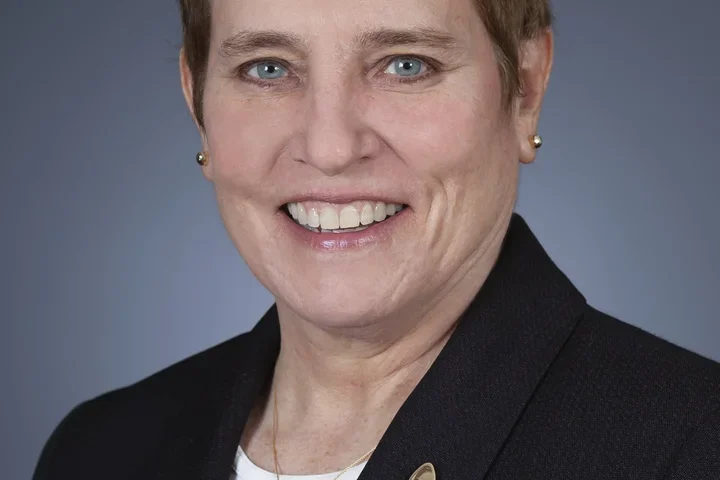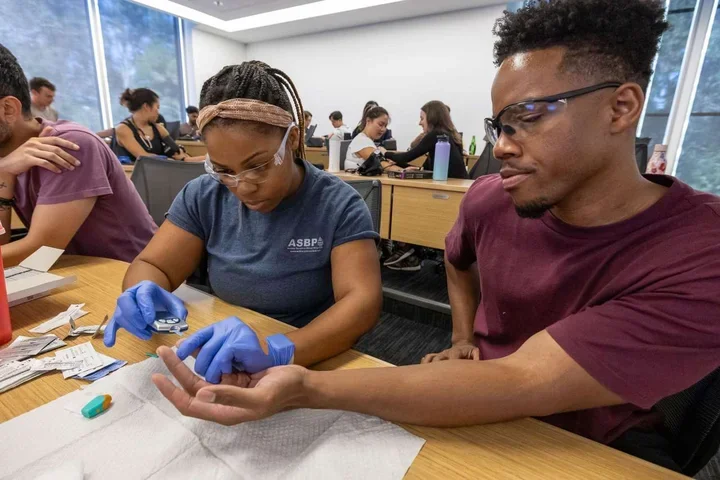Physical Therapist - Sports Medicine Career
Medical Expert Interview

Sports Medicine Careers
Sports medicine is an area of healthcare focused on athletes. A sports medicine practice covers myriad medical and physiological goals and concerns that can and do impact athletes.
Such an expansive goal demands a commensurate breadth of practitioners and professionals. That’s why the field of sports medicine encompasses a dynamic range of job types and career opportunities.
The article below explores physical therapy. Additional sports medicine career roles include:
- Certified Athletic Trainer
- Orthopedic Surgeon
- Sports Neurologist
- Sports Cardiologist
- Sports Psychologist
- Sports Nutritionist / Registered Dietician
- Team Physician
Sports Medicine Career Overview
Header image courtesy of UCLA Athletics. Pictured: Jada Hart. Photo by: Eric Hurd.
Meet Jeremy Vail, Physical Therapist and Director of Rehabilitation at UCLA
Physical therapist and athletic trainer Jeremy Vail is the director of rehabilitation for UCLA’s football team.

He found his way to a career in sports physical therapy in the most natural way possible: By playing sports growing up and suffering his fair share of injuries.
“As a student athlete, I had plenty of experience being on the receiving end of physical therapy,” he explains.
While learning all about athletic training in college, he realized the injuries of his past hadn’t been managed in the most optimal ways.
“Thanks to my interactions with athletic trainers during undergrad, I realized that as a student athlete, I’d missed out on the benefits of a comprehensive injury management program.”
The epiphany opened his eyes to the potential of physical therapy as a field—and also as his future career.
What Does a Physical Therapist Do in Sports Medicine?
Physical therapists in sports medicine help athletes recover from injuries and prevent future ones. The therapeutic programs they develop center around exercises, stretches, and other forms of physical movements and manipulations, including massage.
Their injury recovery and prevention plans typically include a combination of different physical therapy techniques, including:
- Monitored exercises and stretches
- Transcutaneous electrical nerve stimulation (TENS)
- Hydrotherapy
- Manual therapy, such as trigger point therapy, myofascial release, and traction
- Dry needling
Physical therapists may also create custom plans to support athletes in improving mobility, range of motion, strength, and functionality. They evaluate each case on an individualized basis, making strategic decisions on what is best for each athlete.
What conditions do physical therapists handle for athletes?
Common issues a sports physical therapist can help with include:
- Tennis elbow
- Knee injuries
- Anterior cruciate ligament (ACL) tears
- Lower back / lower extremity injuries
- Tendinitis
- Rotator cuff tears
- Ligament tears
- Muscle strains
- Joint dysfunction
How to Become a Sports Physical Therapist
It typically takes at least 7 years to complete the education and training required to become a sports physical therapist:
- Earn a bachelor’s degree.
- Estimated time required: 4 years
- Earn a doctor of physical therapy (DPT) degree from a program accredited by the Commission on Accreditation in Physical Therapy Education (CAPTE).
- Estimated time required: 3 years
- CAPTE began requiring the DPT degree as a prerequisite for its accredited physical therapy education programs in 2016.
- Pass the National Physical Therapy Exam (NPTE®), administered by the Federation of State Boards of Physical Therapy.
- Estimated time required: Varies
- Meet all physical therapy licensure requirements determined by your state regulatory board.
- Estimated time required: Varies, as each individual state handles their own licensure requirements.
Optional steps:
Secure board and other supplementary certifications.
- Estimated time required: Varies highly per individual and experience level.
- For example, Jeremy holds the following certifications:
- Board Certified Sports Clinical Specialist
- Board Certified Orthopedic Clinical Specialist
- Certified Manual Therapist
Where can aspiring sports physical therapists find additional information about education, training, and certification?
- Federation of State Boards of Physical Therapy (FSBPT)
- American Physical Therapy Association (APTA)
- Commission on Accreditation in Physical Therapy Education (CAPTE)
- American Academy of Orthopedic Manual Physical Therapists (AAOMPT)
Advice for Aspiring Sports Physical Therapists
Jeremy feels strongly that aspiring sports physical therapists be aware of and comfortable with the idea of working as needed.
“You’re never going to have a 9 to 5, 40 hour a week job,” he says. “Being a sports professional is a lifestyle choice more than a job.”
Jeremy enjoys many aspects of his work in sports medicine, but he especially appreciates the variety. The issues he sees are as unique and varied as human bodies. Never seeing the same thing twice is challenging in the best and most motivating sense of the word.
He also faces challenges without silver linings. It can be difficult to manage athletes’ expectations for recovery, especially when they have instant access to intriguing—but often unscientific—tips and recommendations via social media. “There is so much stuff out there and so little of it is based in science and fact,” he explains.
If an athlete tears their anterior cruciate ligament (ACL), for example, they might find one person on Twitter or Instagram claiming to heal themselves through dubious means. Such anecdotal information can create false hopes and unrealistic expectations.
“We really have to work on managing expectations and educating people on what a sound and sustainable healing process looks like, so they can be truly focused and intentional as they work through it.”
That’s why he says it's important for would-be physical therapists to have a clear and concise—yet informative—communication style and the ability to maintain a level-headed demeanor.
Quick Facts: Sports Physical Therapists
What are the core job responsibilities of a sports physical therapist?
- Develop and implement sustainable recovery and rehabilitation plans centered around exercises, stretches, and other forms of physical movements and manipulations, including massage.
- Support athletes in improving mobility, range of motion, strength, and functionality.
- Educating and advising athletes on sustaining the benefits of physical therapy in the long run.
Where can a sports physical therapist find employment?
Sports physical therapists may find employment opportunities in a variety of different settings, including:
- Professional athletic teams and organizations
- Olympic teams and organizations
- School athletic teams of all levels
- Sports rehabilitation centers
- Sports medicine clinics
- Healthcare facilities (clinics, hospitals, and private practices)
- Gyms/training facilities
How much does a sports physical therapist make?
- Estimated annual salary range: $70,000 to $130,000
Physical therapists practicing in the United States make an average of around $70,000 to $130,000 annually, according to recent data from the U.S. Bureau of Labor Statistics. Earning potential varies widely depending on the therapist’s location and industry of work, education, and certifications.



